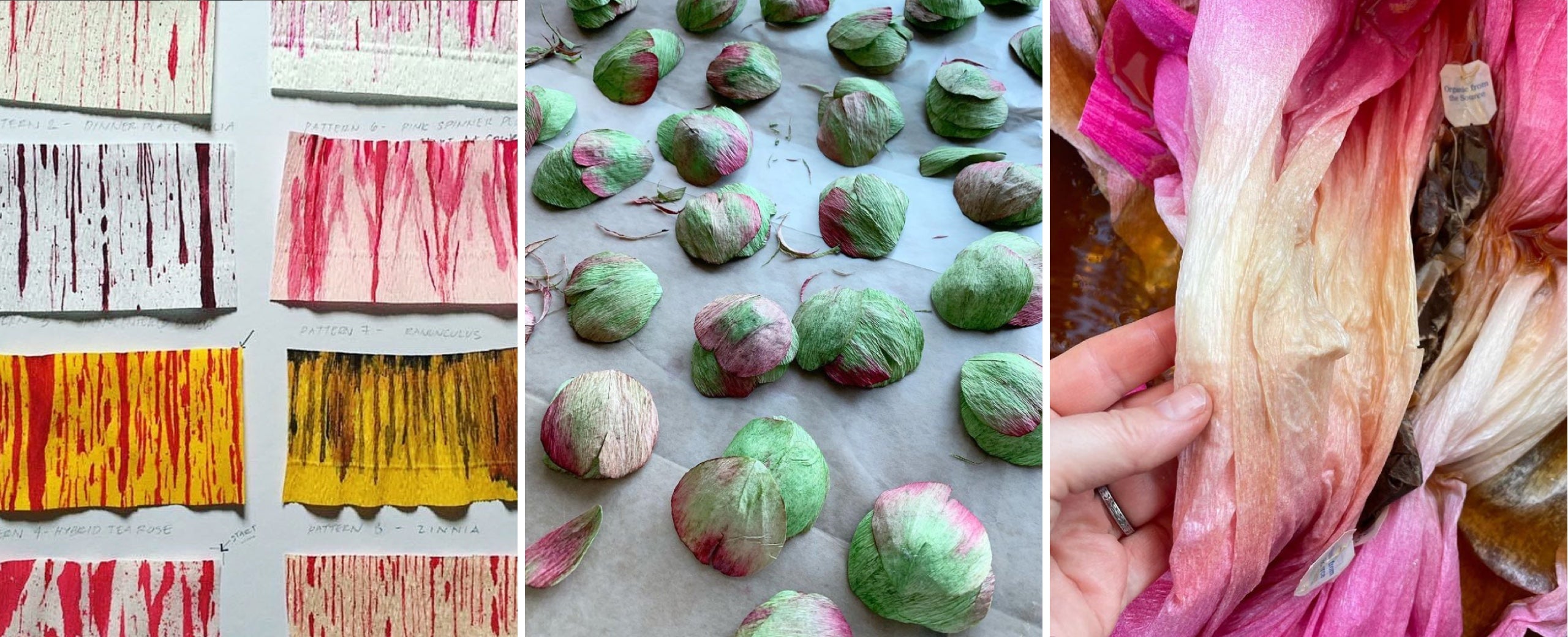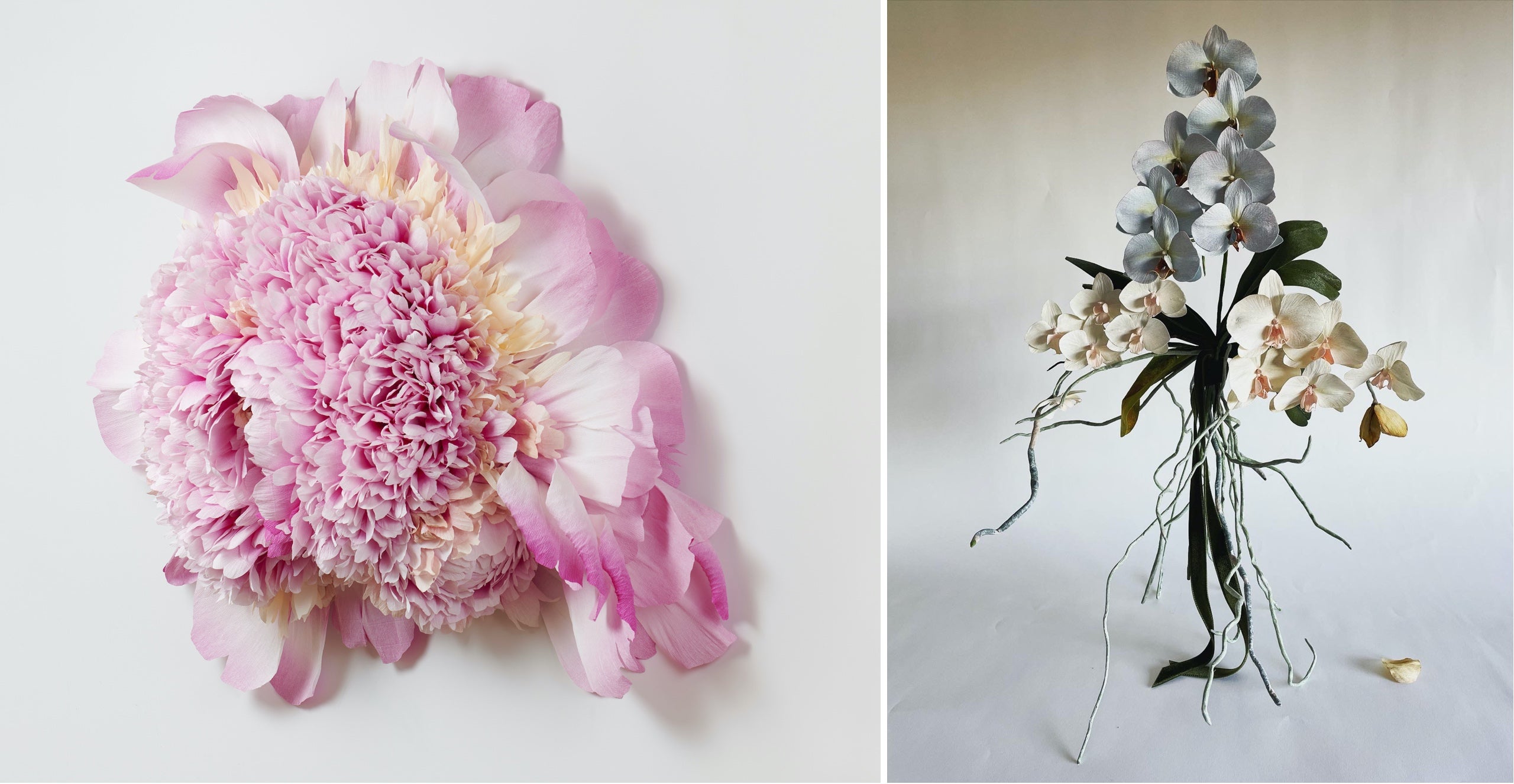
The Art of the Craft: Tiffanie Turner
In the studio with a San Francisco–based artist transforming crepe paper into one-of-a-kind floral masterpiecesTwo to four months.
That’s how much around-the-clock time it takes Tiffanie Turner of Papel SF to create her elaborate and impeccably crafted paper flowers. Her art has earned plaudits from The New York Times and Vogue—not to mention more than 50,000 devoted followers on Instagram.
These aren’t your average pretty greeting-card flowers. Using crepe paper exclusively, Turner depicts the fragility and mortality of decaying flowers, giving them an ethereal, hyperreal quality that evokes the cyclical nature of life itself. It’s a style that was inspired by her own experience with aging, and witnessing others go through the same process. “I was just really trying to put that through in my work,” Turner says. “Not only with things that were wilting, but also things that were irregular, like fasciated chrysanthemums that were growing two heads in one.”

Not that flowers were her first choice of subject. “I grew up in the woods [in Wolfeboro, New Hampshire], but we weren’t a fresh-flower–seeking family,” she says. It wasn’t until she was halfway through architecture school, when she encountered the floral watercolors of Charles Rennie Mackintosh, that she took an interest in depicting flowers—but as a painter. She did that as a hobby until a major life event shifted her priorities. “I went through a giant, left-at-the-altar breakup in 2000, and painting was something that really filled in all that extra time.” She would go to bed early, then wake up at 2 a.m. to paint before work.

After getting married and having kids, she started participating in amateur performances in her new home of San Francisco and needed to make a floral crown headdress for one of her acts. Upon discovering a rich Italian crepe paper for the project, Turner was hooked. “It just snowballed from a daily practice into an art form, and something I really love,” she says.

To create a piece, she begins with a concept plus a specimen of the flower itself. “I most often start from the center of the piece and build outward, cutting and shaping each petal by hand,” she says. While the end result is painterly, she uses paper that has an integral color. Sometimes she stains the paper with tea or watercolor prior to cutting the petals, before using hot glue to hold everything together. The end results come in one of two sizes: life-size or what Turner calls “giant”—between 26 and 66 inches in diameter. “A mid-size flower just doesn’t translate or have the same effect as something that can hold thousands of petals,” she says. “My background as an architect has helped me engineer myself out of some very confusing configurations, and luckily my gallery provides me with wonderful art handlers who know exactly how to move my work.”
That work has been on display in solo shows at several San Francisco galleries and in group exhibitions around the country. Turner also leads workshops around the world, and aspiring paper artists can pick up her book: The Fine Art of Paper Flowers.
“Most people who get involved with paper flowers get really into it,” she says. “Several people have gone through therapy for something really traumatic, and this is the practice that they use to get themselves through it.” Suffice it to say, the impact of her creations won’t wilt anytime soon.

- Courtesy of Tiffanie Turner
- Courtesy of Shaun Roberts






